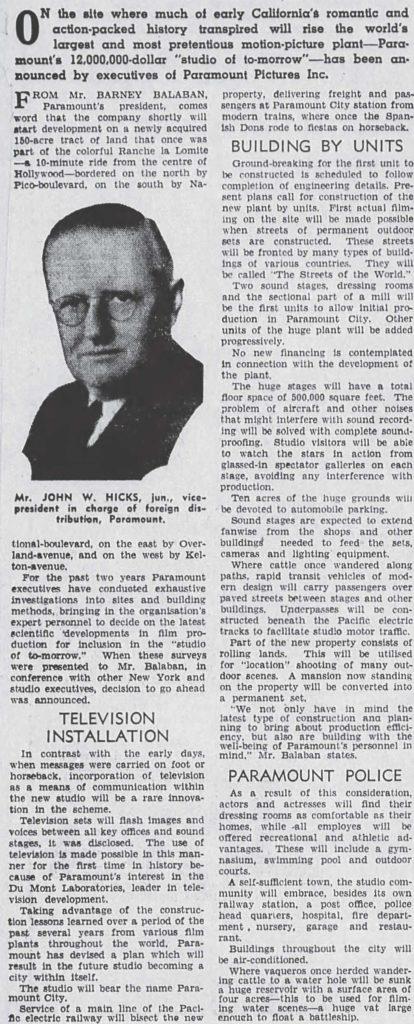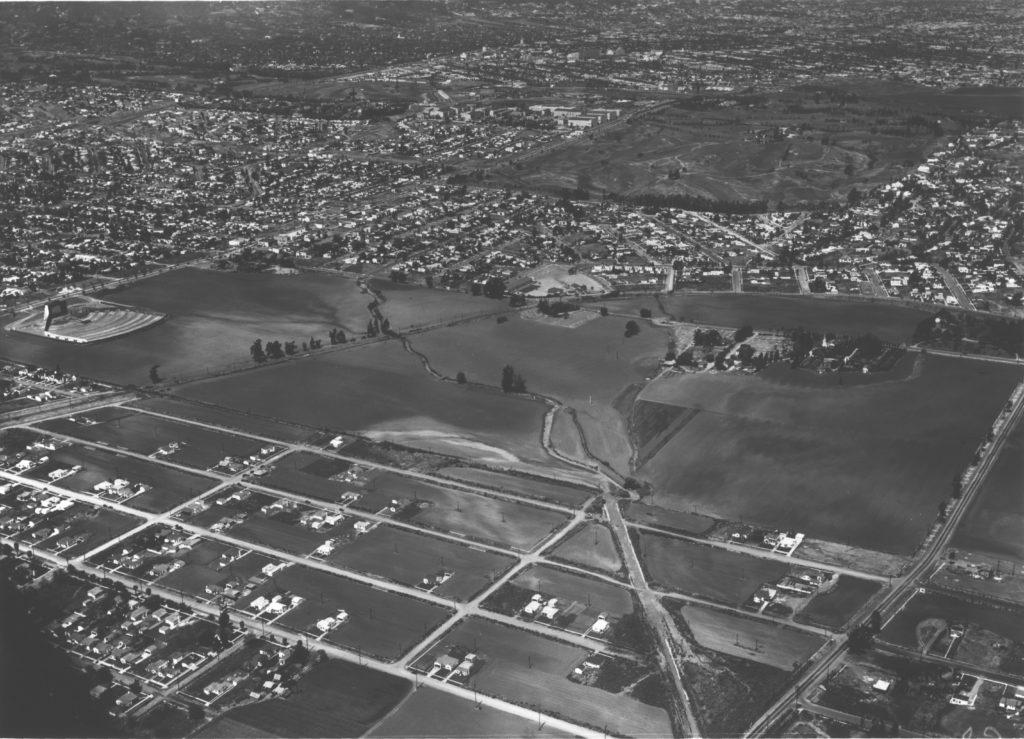Paramount City
In 1939, Paramount Pictures announced plans for a studio complex straddling the Southern Pacific tracks. It would combine Ferdinand Bain’s 90-plus-acre Rancho La Lomita running south to National Boulevard with Magdalena Wolfskill Sabichi’s (1846-1930) 60-plus acres north of the tracks to Pico Boulevard.
Announced worldwide, the 150-acre studio was to be served by the Pacific Electric Railway’s Santa Monica Air Line “delivering freight and passengers at Paramount City station from modern trains, where once the Spanish Dons rode to fiestas on horseback.” (Paramount City – New Studio Planned, The Age (Melbourne, Victoria, Australia), Aug. 11, 1939.) Nearby Clover Field airport, with the Douglas Aircraft Company‘s headquarters and factory next door, were said to be planned for: “The problem of aircraft and other noises that might interfere with sound recording will be solved with complete soundproofing.” Paramount intended to repurpose Ferdinand Bain’s “mansion” as a “permanent set,” leasing it in the meantime to the Consul General of Chile.


Paramount’s plans stalled with American entry into World War II and were reportedly stymied, in part, by airplane noise. In 1944, Paramount sold most of the land to the Overland Housing Company for defense worker houses in Rancho Park‘s Westwood Gardens neighborhood. In 1945, the Catholic Archdiocese bought the 2 ½ acres surrounding the Bain house. “Oilmen” Edwin Wendell Pauley (1903-1981) and Harold Pauley (1909-1954) bought the section fronting Pico Boulevard for a suburban shopping center. (L. A. Evening Citizen News, Westwood Shopping Center Bids Asked (Nov. 15, 1948).)